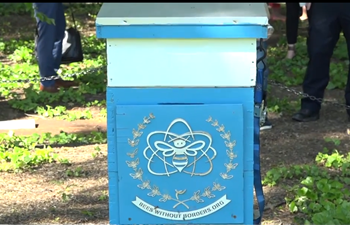NEW YORK, May 26 (Xinhua) -- A recent study into the formation of Pluto suggests that it might be the result of a collision between 1 billion comets, U.S.-based science journals and websites reported Saturday.
The study was based on data gathered by New Horizons, the first NASA spacecraft to fly by Pluto in 2015, as well as the information collected by the European Space Administration's Rosetta spacecraft, read a paper published in the latest version of the journal Icarus.
Researchers observed an area of Pluto known as Sputnik Planitia, which is packed with nitrogen, and found the chemical composition of the area seems to match up "shockingly well with that of a well-studied comet," according to a report on BGR.com, a technology-influenced website.
That comet, known as Comet 67P, was the target of Rosetta, which stayed with the comet for over two years from 2014 through 2016.
"We found an intriguing consistency between the estimated amount of nitrogen inside the glacier and the amount that would be expected if Pluto was formed by the agglomeration of roughly a billion comets or other Kuiper Belt objects similar in chemical composition to 67P," said Southwest Research Institute's Christopher R. Glein, lead author of the paper.
Glein's team is not claiming to have nailed down Pluto's origin definitively. But the research "builds upon the fantastic successes of the New Horizons and Rosetta missions to expand our understanding of the origin and evolution of Pluto," he was quoted as saying by a report published on Space.com, a space and astronomy news website in the United States.













